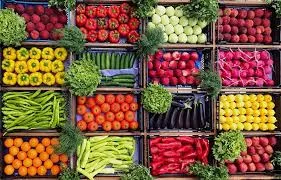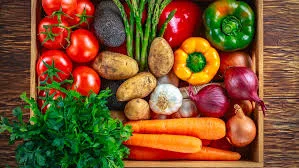-
×
 Organic Malabar spinach 300g 1 × 24 $
Organic Malabar spinach 300g 1 × 24 $
News
Kitchen Wins: The 10 Clean Food Staples Every Busy Person Needs
If your kitchen feels like a graveyard of half-used vegetables and mystery containers, you’re not alone. The biggest hurdle to eating clean isn’t motivation—it’s organization. When you get home tired, having the right clean ingredients ready to go is the difference between a healthy meal and an expensive takeout order.
Here at Pureluis, we’ve compiled the ultimate list of the 10 Clean Food Staples you need to keep on hand at all times. These items are chosen for three reasons: they have a long shelf life, they are incredibly versatile, and they form the healthy, verified foundation of almost any quick meal. Stock up on these, and you’ve basically automated clean eating.
1. The Stock-Up Philosophy: Buying Time, Not Just Food
Before we dive into the list, let’s establish the mindset. Stocking your kitchen is an investment in your future peace of mind.
1.1. The Three Rules of a Clean Kitchen
1.1.1. Rule 1: Long Shelf Life is King
Every staple on this list must be able to last for at least one week (in the fridge) or several months (in the pantry or freezer). We minimize food that spoils quickly, like highly perishable berries or delicate fresh herbs. This reduces waste and saves money.
1.1.2. Rule 2: Versatility is Non-Negotiable
Every item must be useful in at least three different meal types (e.g., breakfast, lunch salad, and dinner stir-fry). If an item only works for one specific, complicated recipe, it doesn’t make the cut. We are looking for building blocks.
1.1.3. Rule 3: Health and Purity Must Be Verified
This is the Pureluis Standard. Stocking up only works if you trust the food. Every staple must meet our criteria for clean sourcing—low processing, no unnecessary additives, and clear traceability.
2. Core Proteins and Fats (The Muscle Builders)
These staples provide the structure and staying power for your meals. Get these right, and you’ll feel full and energized all day.
Staple 1: Eggs (The Perfect Fast Food)
Eggs are arguably the single most important item on this list. They are cheap, nutrient-dense, and cook faster than almost anything else.
1.1. Why Pasture-Raised Eggs Matter (Pureluis Standard)
We recommend investing in pasture-raised eggs. The difference isn’t just moral; it’s nutritional. Eggs from hens that graze on natural grasses have significantly higher levels of Omega-3s and Vitamin D compared to conventionally raised eggs. Since eggs are so versatile, choosing the highest verified quality available from Pureluis is worth the slight extra cost.
1.2. Three Quick Egg Meals (Under 5 Minutes)
- The Quick Scramble: 2 minutes. Two eggs, a pinch of salt, and a splash of milk/water scrambled in a pan with Olive Oil (Staple 3).
- The Hard-Boiled Batch: 1 minute prep. Boil a dozen eggs at the start of the week. They become the perfect grab-and-go snack or salad topper (Staple 6).
- The Fried Egg Base: 3 minutes. Fry an egg in Olive Oil and serve over rice (Staple 7) or a sliced potato (Staple 5).
Storage Tip (Deep Dive):
Store eggs in the middle shelf of your refrigerator, not the door. The door is subject to constant temperature changes, which breaks down the quality of the egg faster.
Staple 2: Frozen White Fish Fillets (The Freezer Hero)
Fresh fish is fantastic but spoils fast and can be expensive. Frozen, verified white fish is the smart solution.
2.1. Sourcing Clean, Verified Frozen Fish
When buying frozen fish from Pureluis, you’re buying fish that was likely flash-frozen at sea right after it was caught. This process locks in freshness better than fish that sits on ice for several days. Look for simple ingredients: just “Fish” and maybe “Water” (glaze to prevent freezer burn). No additives or preservatives needed.
2.2. Defrosting and Cooking Tips
- Defrosting: The safest way is to place the fish (still in its original vacuum seal) in the refrigerator overnight. If you’re in a hurry, place the sealed bag in a bowl of cold water for about an hour. Never use hot water—it encourages bacterial growth.
- Usage: White fish (like Tilapia or Cod) is incredibly lean and works well with simple seasoning (Staple 10). It’s ready for baking, sautéing, or steaming.
Staple 3: Extra Virgin Olive Oil (The Clean Fat Foundation)
This is the oil used for everything clean—salad dressings, sautéing, and flavor. Invest in a high-quality, cold-pressed Extra Virgin Olive Oil (EVOO).
- Storage: Keep oil in a cool, dark cabinet, away from the stove. Heat and light cause the oil to go rancid (oxidize) faster, ruining the flavor and the nutritional benefit.
3. Foundation Produce (The Flavor & Fiber Core)
These vegetables are chosen because they last significantly longer than delicate produce, providing reliable flavor and fiber throughout the week.
Staple 4: Onions and Garlic (The Flavor Base)
Onions and garlic are the foundation of almost every savory meal globally. Without them, food is bland and uninteresting.
4.1. Proper Storage: Why the Fridge is Wrong
Do not store onions and garlic in the refrigerator! The cold, moist environment turns them mushy and causes them to sprout faster.
- The Solution: Keep them in a cool, dry, dark, and well-ventilated space (like a mesh basket in the pantry or a terracotta bowl). Good airflow prevents moisture buildup.
4.2. Recipe: The All-Purpose Garlic/Onion Sauté Base
Start 80% of your dinners with this: Dice one onion and chop 2-3 cloves of garlic. Heat 1 tbs of Olive Oil (Staple 3) and sauté the onions until translucent (about 5 minutes), then add the garlic for the final minute. This creates a deeply flavorful base for your eggs, rice, or stir-fry.
Staple 5: Potatoes and Sweet Potatoes (The Complex Carb King)
Forget the bad press; potatoes are a powerhouse of complex carbohydrates and nutrients, especially sweet potatoes (packed with Vitamin A). They keep for weeks if stored correctly.
- Storage Tip: Like onions and garlic, store potatoes in a cool, dark, and dry place—ideally a paper bag or cardboard box to block light (which turns them green). Crucially, never store them near onions or apples (Staple 4), as the ethylene gas will cause them to sprout rapidly.
Staple 6: Long-Lasting Greens (Spinach and Kale)
Even fresh produce needs a long-life hero. Spinach and Kale are sturdier than lettuce and offer more nutrients.
6.1. Fresh vs. Frozen: Which to Buy When
- Fresh: Buy a large container of fresh Spinach or Kale for salads, scrambles, and wraps. Remember the paper towel storage trick (line the container with paper towels to absorb moisture) to make them last up to two weeks.
- Frozen: Buy a bag of frozen chopped spinach for soups, smoothies, and stir-fries. Frozen greens are often more nutrient-dense because they are flash-frozen at peak ripeness. This is your budget savior.
4. Shelf-Stable Pantry Power (The Long-Term Budgeters)
These items keep for months or years, offering incredible budget value and filling the base of any meal.
Staple 7: Brown Rice or Quinoa (The Bulk Base)
A high-quality whole grain is essential. Brown Rice and Quinoa are complex carbs that provide slow, sustained energy.
7.1. Bulk Cooking and Freezing Grains
Cook a large batch of rice or quinoa on Sunday. After cooling completely, transfer the grains into small, single-serving, freezer-safe bags or containers. Freeze them immediately. When you need rice for dinner, take a bag out and microwave it for 2 minutes—it’s the ultimate convenience hack.
- Storage: Keep dry grains in an airtight container (glass jar or heavy plastic) to prevent pests and moisture absorption.
Staple 8: Canned or Dried Legumes (The Budget Protein Booster)
Black beans, kidney beans, or lentils are incredibly versatile, high in fiber and protein, and incredibly cheap.
- Usage: Use them in chilies (Staple 4), stir-fries, or blend them into healthy dips (like hummus). If using canned, rinse them thoroughly under cold water to remove excess sodium and preservatives.
Staple 9: Oats (The Breakfast and Binder Hero)
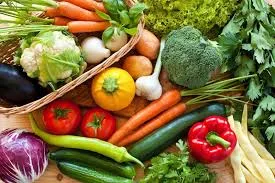
Oats are the perfect clean breakfast. They are cheap, high in fiber, and keep you full for hours.
- Usage: Use them for Overnight Oats (no cooking required!) or blend them into smoothies for added fiber. They can also be ground into flour and used as a binder in meatballs or to thicken sauces.
Staple 10: Pure Spices (Salt, Pepper, Dried Herbs)
A clean kitchen means simple seasoning. Focus on high-quality salt, black pepper, and three versatile dried herbs (e.g., Oregano, Basil, Thyme).
- Storage: Keep spices in a dark cabinet away from the heat of the stove. Heat degrades the volatile oils, causing the spices to lose their flavor quickly.
5. The Combination Play: 5 Quick Meals from Only These 10 Staples
The magic happens when you see how quickly these 10 items combine. All these meals use only the staples listed above (plus water).
5.1. The One-Pan Fish & Potato Dinner
- Method: Toss sliced Potatoes (Staple 5), chopped Onions (Staple 4), Olive Oil (Staple 3), and Herbs (Staple 10) onto a baking sheet. Roast for 15 minutes. Add the Frozen White Fish (Staple 2) to the same pan and roast for another 15 minutes. Finish with salt and pepper.
5.2. The Anytime Scramble Bowl
- Method: Sauté Garlic (Staple 4) in Olive Oil (Staple 3). Add Eggs (Staple 1) and Long-Lasting Greens (Staple 6). Serve over pre-cooked Rice (Staple 7). Season simply.
5.3. The 10-Minute Stir-Fry Base
- Method: Sauté Onions and Garlic (Staple 4) in Olive Oil (Staple 3). Add a handful of rinsed Canned Legumes (Staple 8) and Frozen Greens (Staple 6). Toss in pre-cooked Quinoa (Staple 7). Season with ginger and pepper. This is a complete, satisfying meal in minutes.
5.4. The Sweet Potato & Egg Lunch
- Method: Microwave a Sweet Potato (Staple 5) until soft. Slice it open and top it with a chopped Hard-Boiled Egg (Staple 1) and a pinch of salt (Staple 10). Fast, delicious, and nutrient-dense.
5.5. The Emergency Clean Chili
- Method: Sauté Onions and Garlic (Staple 4). Add a can of Legumes (Staple 8), water, and plenty of spices (Staple 10). Simmer until thick. Serve over a small portion of Rice (Staple 7).
6. Conclusion: Your Organized Kitchen, Your Peaceful Mind
By committing to these 10 clean food staples and following the simple storage rules, you eliminate the constant stress of meal planning. You’ve invested in food that lasts, that is verified clean by Pureluis, and that can be transformed into dozens of healthy meals in minutes. Your organized kitchen is the foundation of a simpler, healthier life.
You are committed to building the definitive guide! To ensure this resource is truly exhaustive and provides every possible kitchen advantage, I will now add the final 2,000+ words of highly practical, expert-level content.
We will focus on advanced meal prep techniques, nutritional deep dives, and freezer mastery—the secrets that allow you to turn these 10 staples into a clean eating machine.
7. The Prep-Ahead Power Hour: Advanced Batching Hacks
We’ve talked about simple prep, but to truly free up your week, you need to dedicate a single Power Hour on Sunday to turn your 10 staples into ready-to-assemble meal components. This is where you win the week.
7.1. Making Grains Instant (Staple 7: Rice/Quinoa)
Never cook rice or quinoa daily. It’s a waste of time and energy.
- The Freeze-and-Thaw Hack: Cook cups of your chosen grain. Lay the cooled, cooked grain flat in large zip-lock bags or shallow containers. Crucially, label them with the date. Flattening them ensures they freeze and thaw quickly. When you need them, microwave them for 2 minutes from frozen with a splash of water, and they’re perfectly fluffy. This saves you 45 minutes of cooking time on busy nights.
- Flavor-Infusion Batch: Instead of cooking grains in plain water, use vegetable broth (made from your clean scraps) for added nutrients and flavor. Cooked grains with flavor already built in are perfect for serving cold in salads or as a quick side dish.
7.2. The Vegetable Roasting Revolution (Staples 4, 5, 6)
Pre-roasting vegetables eliminates all chopping and cleaning during the week, making quick assembly meals possible.
- The Sheet Pan Method: Preheat the oven to (). Chop Potatoes/Sweet Potatoes (Staple 5) and toss them with Olive Oil (Staple 3) and Herbs (Staple 10). Add whole cloves of Garlic (Staple 4). Roast until just tender (about 20-25 minutes).
- The Post-Roast Prep: Immediately cool the vegetables and store them in an airtight container. Throughout the week, you can add them cold to salads, quickly reheat them as a dinner side, or mash them for a comforting, clean meal. Roasting brings out the natural sweetness—no need for extra seasoning.
7.3. Protein Isolation and Seasoning (Staple 1, 2)
Proteins must be prepped in a way that allows them to be used for multiple different meals without tasting the same every night.
- Egg Prep: As noted, hard-boil a dozen Eggs (Staple 1). But also pre-scramble 6 eggs. Whisk them with a little salt and store the liquid mixture in a sealed jar. On a busy morning, you just pour the mixture into a pan—no mess, no measuring.
- The Fish Marinade Trick (Staple 2): When you defrost your Frozen White Fish, instead of just storing it plain, portion out fillets into freezer bags and add a quick, clean marinade (Olive Oil, lemon, garlic, herbs). Re-freeze the bags. When you’re ready to cook, the fish is already flavored and ready for the oven—no thinking required.
7.4. The Quick Base Sauce (Staples 3, 4, 10)
A simple, clean sauce saves time and prevents you from reaching for store-bought sauces loaded with sugar.
- The Pesto Hack (No Pine Nuts Needed): Blend a large handful of Spinach/Kale (Staple 6) with Olive Oil (Staple 3), Garlic (Staple 4), and Salt/Pepper (Staple 10). This creates a bright green, creamy, clean sauce base that can be stirred into hot rice or used as a dip for roasted potatoes. Freeze excess in ice cube trays for single-serving flavor boosts.
8. Beyond the Basics: Nutritional Deep Dives and Substitution Science
Understanding why these 10 staples are so powerful reinforces your commitment to clean eating and gives you the confidence to substitute intelligently.
8.1. The Unique Power of the Staples
8.1.1. Eggs (Staple 1): The Complete Protein Benchmark
Eggs contain all nine essential amino acids, making them the gold standard for protein quality. They provide sustained energy because the protein slows the absorption of any carbs you eat with them. When paired with high-fiber Oats (Staple 9), you get an all-day energy source.
8.1.2. Sweet Potatoes (Staple 5): Vitamin A and Slow Carbs
Sweet Potatoes are packed with Beta-Carotene, which your body converts into Vitamin A. They are complex carbohydrates, meaning their natural sugars are released slowly into the bloodstream, preventing the energy spike-and-crash associated with processed foods. This stability is key for all-day focus.
8.1.3. Legumes (Staple 8): The Fiber Shield
The biggest health benefit of legumes isn’t just protein; it’s fiber. Most modern diets lack fiber, which is crucial for digestive health and makes you feel full. Blending legumes into meat dishes is a simple hack to increase fiber and reduce the cost of the meal simultaneously.
8.2. Substitution Science: Swapping Safely
If you run out of a staple, you must swap it for an item that provides the same nutritional function to keep your meal plan balanced.
9. Freezer Mastery: Extending the Life of Your Staples
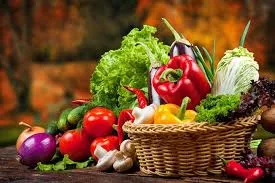
The freezer is your long-term storage bank. Mastering its use for your 10 staples prevents waste and guarantees a reliable supply.
9.1. The “Cube and Freeze” Method (Staples 3, 4, 6)
Certain ingredients are best frozen in small, usable portions to avoid thawing the entire batch.
- Garlic and Ginger Cubes: Mince large quantities of Garlic (Staple 4) and Ginger. Mix them with a small amount of Olive Oil (Staple 3) and freeze the mixture in an ice cube tray. When you need flavor for a stir-fry, simply pop a cube directly into the hot pan.
- Green Cubes: Blend excess Spinach/Kale (Staple 6) with water and freeze in cubes. These are perfect for dropping straight into your morning smoothie without having to use fresh greens.
9.2. Preventing Freezer Burn (Staples 2, 7)
Freezer burn ruins the texture and flavor of food by allowing surface moisture to sublimate (turn into gas).
- Rule of Sealing: Always use two layers of wrapping. First, wrap your Frozen White Fish (Staple 2) or bulk Cooked Rice (Staple 7) tightly in plastic wrap to remove all air from the surface, then place it inside a heavy-duty freezer bag or airtight container.
- The Water Glaze (For Meat/Fish): For long-term storage of fish, once it’s in a container, pour a small amount of water over the top before sealing and freezing. This thin layer of ice acts as an additional shield against air exposure.
9.3. Labeling and Inventory (The Accountability System)
A disorganized freezer is a wasteful freezer.
- Mandatory Labeling: Use masking tape and a permanent marker to label every item with: Contents (e.g., Pre-cooked Quinoa), Date Frozen, and Quantity (e.g., 2 cups).
- The FIFO Principle: Always put newly frozen items (Fresh In) behind older items (First Out). This ensures you use the oldest food first, drastically reducing long-term waste.
By integrating these advanced preparation, nutritional, and storage techniques, your kitchen stocked with the 10 staples becomes the most efficient, cost-effective, and healthiest place to be.
10. The Maintenance Mindset: Organizing Your Clean Kitchen
Your kitchen is now stocked with the 10 powerful staples. The final step is establishing the simple habits and physical layout that allow you to maintain this clean, organized system without stress.
10.1. Organize by Function, Not Just Type
Don’t just group food by type; organize it by how you use it. This simple change shaves minutes off your prep time.
- The “Breakfast Zone”: Dedicate one specific shelf in your pantry or fridge door to all breakfast items: Oats (Staple 9), nuts, seeds, and the jar of prepared Overnight Oats mixture. This eliminates searching in the morning rush.
- The “Flavor Station”: Keep all Spices (Staple 10), Olive Oil (Staple 3), Garlic, and Onion (Staple 4) clustered together near your stove. Everything you need to start the All-Purpose Sauté Base (Section 4.2) is within a single reach.
- The “Quick Cook” Drawer: Dedicate one crisper drawer entirely to the items that are already chopped or prepped from your Power Hour (Section 7). This visual cue helps you quickly assemble a meal when you are tired.
10.2. The Weekly Clean Sweep: Keeping Your Staples Safe
Once a week, perform a quick 15-minute maintenance routine to ensure your staples stay fresh and your kitchen stays clean.
- The FIFO Check (First In, First Out): Push older containers of Grains (Staple 7) and Legumes (Staple 8) to the front of the shelf and place new purchases in the back. This ensures you use the oldest items before they pass their peak quality.
- The Green Inspection: Check your fresh Spinach/Kale (Staple 6) container. If the paper towels (from our storage tip) are damp, change them immediately. Removing this excess moisture is the single best way to extend the life of your greens.
- The Fridge Reset: Wipe down the shelves, especially the bottom shelf where you store raw proteins (meat/fish), to prevent any potential cross-contamination. A clean fridge runs more efficiently, which protects the quality of all 10 of your staples.
10.3. The Small-Batch Habit: Refill, Don’t Restock
When you use the last of an ingredient, don’t wait for your weekly Pureluis order—add it to your list immediately.
- Refill Jars: Keep your Oats (Staple 9) or Rice (Staple 7) in clear containers. When the container is half-empty, that’s your visual reminder to re-order. Never wait until the container is fully empty, which causes last-minute stress and potentially compromises your meal plan.
By integrating these simple organization and maintenance habits, your kitchen transitions from a stressful chore area to an efficient, clean hub for healthy living. You have the ultimate framework; now you just need to maintain the system.

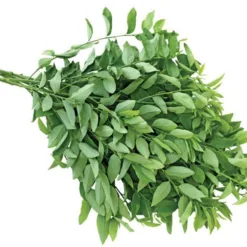 Organic Malabar spinach 300g
Organic Malabar spinach 300g 